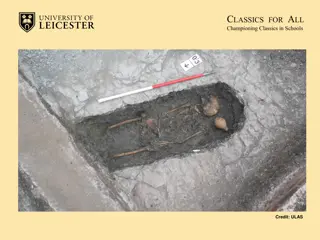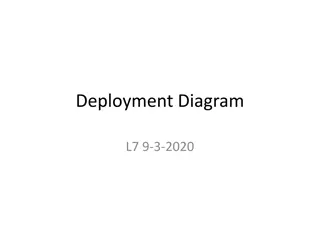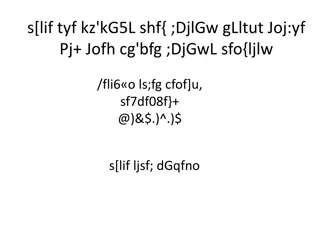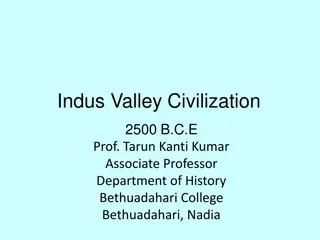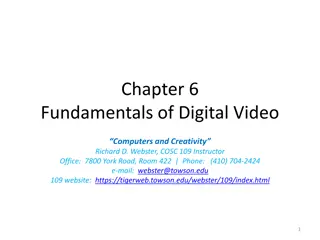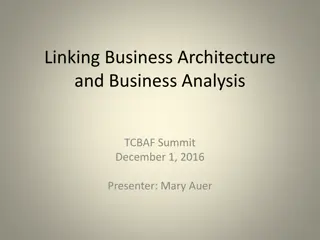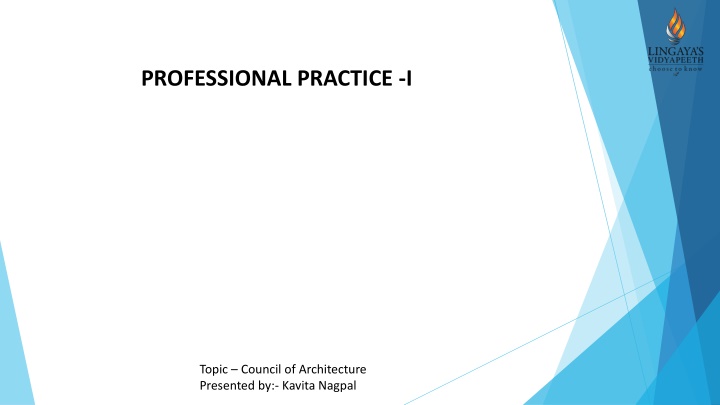
Actors, Artifacts, and Enduring Value in Architecture
This study delves into preserving architectural artifacts to reveal the complexity of practice and values shaping the built environment. Through historical analysis and a reflective case study, the research highlights varied decision-making practices and the need for continual conversations among actors in the architectural field. The implications extend to architectural education, data management, and archival expertise.
Download Presentation

Please find below an Image/Link to download the presentation.
The content on the website is provided AS IS for your information and personal use only. It may not be sold, licensed, or shared on other websites without obtaining consent from the author. If you encounter any issues during the download, it is possible that the publisher has removed the file from their server.
You are allowed to download the files provided on this website for personal or commercial use, subject to the condition that they are used lawfully. All files are the property of their respective owners.
The content on the website is provided AS IS for your information and personal use only. It may not be sold, licensed, or shared on other websites without obtaining consent from the author.
E N D
Presentation Transcript
PROFESSIONAL PRACTICE -I Topic Council of Architecture Presented by:- Kavita Nagpal
INTRODUCTION The Council of Architecture (COA) has been constituted by the Government of India under the provisions of theArchitectsAct, 1972, enacted by the Parliament of India, which came into force on 1st September, 1972. TheAct provides for registration ofArchitects, standards of education, recognized qualifications and standards of practice to be complied with by the practicing architects. The Council ofArchitecture is charged with the responsibility to regulate the education and practice of profession throughout India besides maintaining the register of architects. For this purpose, the Government of India has framed Rules and Council ofArchitecture has framed Regulations as provided for in theArchitectsAct, with the approval of Government of India. Any person desirous of carrying on the profession of 'Architect' must have registered himself with Council ofArchitecture. For the purpose of registration, one must possess the requisite qualification as appended to theArchitectsAct, after having undergone the education in accordance with the Council ofArchitecture (Minimum Standards ofArchitectural Education) Regulations, 1983.
The registration with Council of Architecture entitles a person to practice the profession of architecture, provided he holds a Certificate of Registration with up-to-date renewals. The registration also entitles a person to use the title and style of Architect. The title and style of architect can also be used by a firm of architects, of which all partners are registered with COA. Limited Companies, Private/Public Companies, societies and other juridical persons are not entitled to use the title and style of architect nor are they entitled to practice the profession of architecture. If any person falsely claims to be registered or misuses title and style of architect, such acts tantamount to committing of a criminal offence, which is punishable under section 36 or 37 (2) of the Architects Act, 1972. There are 135 institutions, which impart architectural education in India leading to recognized qualifications. The standards of education being imparted in these institutions (constituent colleges/departments of universities, deemed universities, affiliated colleges/schools, IITs, NITs and autonomous institutions) is governed by Council of Architecture Regulations, 1983, which set forth the requirement of eligibility for admission, course duration, standards of staff & accommodation, course content, examination etc.
DEFINITIONS (a)"Architect" means a person whose name is for the time being entered in the register; (b)"Council" means the Council ofArchitecture constituted under section 3; (c)"Indian Institute ofArchitects" means the Indian Institute ofArchitects registered under the Societies RegistrationAct, 1860; (d)"Recognized qualification" means any qualification in architecture for the time being included in the Schedule or notified under section 15; (e)"Register" means the register of architects maintained under section 23; (f)"Regulation" means a regulation made under thisAct by the Council; (g)"Rule" means a rule made under thisAct by the Central Government.
WHAT IS ARCHITECTS ACT, 1972? The main purpose of the architects act, 1972 as given in the preamble is to provide for the registration of architects and for matters connected therewith. It has already come into force and extends to the whole India. It contains 45 sections along with one schedule. The act can briefly be studied under the following heads: 1.Use of title Architect 2.Council of Architecture 3.Qualification for Registration USE OF TITLE ARCHITECT A person is prohibited from using the title and the style of Architect unless he is a person registered in the Register of Architects (section 37). This prohibition does not affect the use of designation as LandscapeArchitect or NavalArchitect .
POWERS To acquire, hold and dispose of the property both movable and immovable. To enter into a contract. Powers to appoint inspectors to inspect any college or institution where architectural education is given or to attend any examination conducted by such bodies for the purpose of recommending to the Central Government, recognition of architectural qualifications granted by such bodies.
ARCHITECTS REGISTRATION COUNCIL TheAct provides for the establishment of Council of Architecture, a body cooperate consists of members from Institutions, Councils, Central and State Government nominees. The members will select Vice president and President from among them. The term of Council is for a period of three years from the date of election of members, or nomination or until the successor, as the case may be has been duly
FUNCTION AND POWERS OF COUNCIL a) Appoint registrar and such other officers and employees as are necessary to carry out its functions. b) To maintain proper account of finance. c) To maintain a registrar of architects registered under the Act, on payment of prescribed fees by the architect and to renew the registration from time-to-time. d) Remove the name of the architect from the register either on his own application or when he is dead or on account of other moral turpitudes. e) To enquire into matters relating to misconduct. f) To furnish reports, copies of minutes and the other information to Central Govt. g) Issue of registration certificate and also duplicates if necessary.
Powers of withdrawing of recognition under certain circumstances and prescribing minimum standard of architectural education. To prescribe standards of professional conduct and etiquette and a code of ethics for the architects. Powers to make regulations. QUALIFICATIONS FOR REGISTRATION Section 14 read with schedule prescribes the following qualifications for the purpose ofregistration: 1.BACHELOR OFARCHITECTS 2.DIPLOMAS INARCHITECTURE 3.MEMBERSHIP OFTHE INDIAN INSTITUTE OF ARCHITECTS
ARCHITECTS ACT,1972 INTRODUCTION An Act to provide for the registration of architects an d for mat t ers connected therewith. It has come into force from 31stMay 1972 an d extends to the whole India. It contains 4 Chapters with 45 Sections along with one Schedule. CHAPTER 1 (ARCHITECT) "architect" means a person whose name is for the time being entered in the register. "Council" means the Council ofArchitecture constituted under Section 3 "Indian Institute ofArchitects" means the Indian Institute ofArchitects registered under the Societies Registration Act, 1860. "recognized qualification" means any qualification in architecture for the t i me being included in the Schedule or notified under section 15. "register" means the register of architects maintained under section 23 "regulation" means a regulation made under this Act by the Council. rule" means a rule made under this Act by the Central Government.




